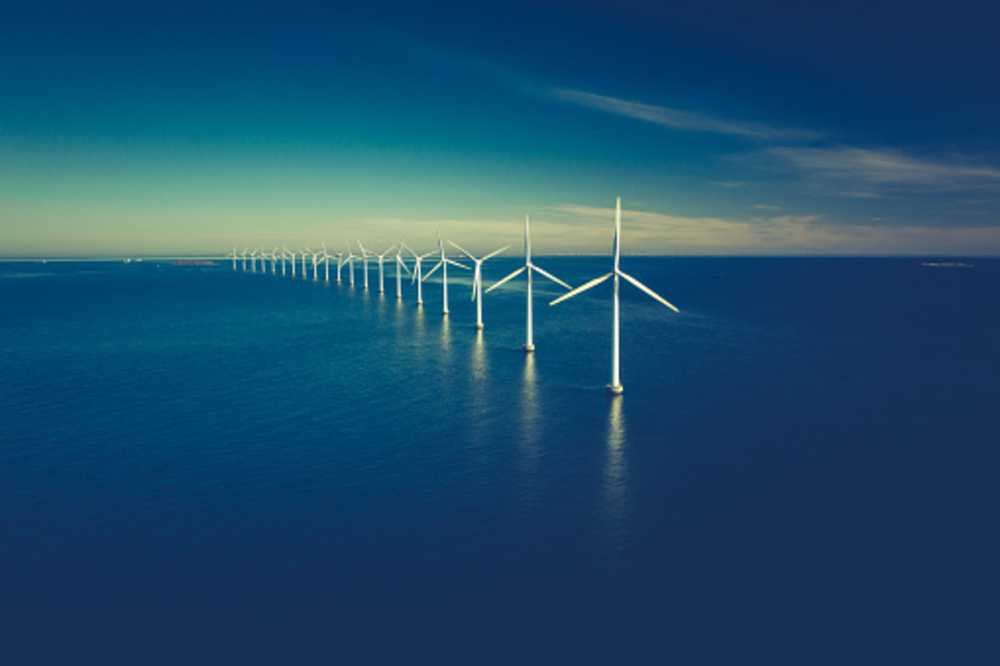A new analysis from Copenhagen-based analyst group Aegir Insights shows the US climate law incentives for green hydrogen production may be fueling the increased interest in developing the Gulf of Mexico’s (GoM) offshore wind potential.
With its enormous industrial chemical, fertilizer, and oil refinery sectors, the GoM region – particularly Texas and Louisiana – is already a national hub for the production of grey hydrogen, which is obtained from fossil gas without carbon capture and consumes 90% of the country’s current supply.
However, green hydrogen production is positioned to be the primary driver and off-take route for offshore wind in the GoM, according to Aegir. It’s thanks to new, long-term tax credits included in the US Inflation Reduction Act (IRA), which President Joe Biden signed in August. Also, this is the opportunity to apply for funding to establish “clean hydrogen” hubs of the federal H2 Hubs program.
Call area for wind projects
The National Renewable Energy Laboratory estimates that the GoM has 500GW of commercial offshore wind potential. The Bureau of Ocean Energy Management (BOEM), which oversees energy development in federal seas, this year established a 30-million-acre “call area” for possible development.
Two wind energy areas (WEAs) – one-off Lake Charles, Louisiana, and the other off Galveston, Texas – are the first choice of the call area. They have a potential of close to 15GW, according to Aegir, and BOEM appears prepared to schedule auctions as early as April.
The GoM has long been on the radar for offshore wind and has long housed the majority of US offshore energy operations, according to Rikke Norgaard, chief commercial officer for Aegir. It is a reasonable step for the US offshore wind industry notwithstanding the challenges.
Why the Gulf of Mexico is a better solution for offshore wind plants
The GoM WEA waters, which are on average 20 meters deep, are both much shallower than the first offshore wind round’s off-coast Pacific area and shallower than the zones up for auction in the US Atlantic.
However, the area faces difficulties, such as lower than either the Atlantic or Pacific coast wind speeds of about 7.4 meters per second (m/s), as well as regular hurricanes that will necessitate more sturdy industrial infrastructure and raise development and operation expenses.
According to Aegir, the levelized cost of energy (LCOE) for the larger Galveston WEA will range from $60 to $71 per MWh, depending on water depth, compared to $69 for the Lake Charles WEA.
Yet, offshore wind deployment faces political ambivalence
Another obstacle to the deployment of offshore wind in the US Gulf is political ambivalence. This is especially true in Texas. There the industry has made little headway despite the larger Galveston WEA off its coast. There are no anticipations to be cost-competitive with onshore wind, solar, or fossil fuels this decade.
However, neighboring Louisiana’s Climate Action Plan has a goal of 5GW of offshore wind power by 2035. Even governmental support, where prices are lower than the national average in the electricity markets of Gulf coastal states, will not guarantee industrial growth.
Federal tax breaks aimed at the development of green hydrogen and offshore wind power could alter this situation.
Through PPAs [power purchase agreements] with hydrogen producers, renewable hydrogen is anticipated to be a significant route to market for offshore wind in both Texas and Louisiana, according to Norgaard. He also mentioned that utilities may purchase green hydrogen to mix with natural gas used in co-fired power plants.
For offshore wind development, the IRA gives 30% investment tax credits (ITC), and its green hydrogen incentives can lower production prices to $3 per kilogram, among the lowest in the world.
Opportunity for export in Europe and Asia
Aegir pointed out that given the European Union’s stated goal of importing 10 million tonnes of green hydrogen by 2030, the worldwide push toward green hydrogen may potentially create prospects for export to markets in Asia and Europe.
The vast offshore oil and gas industry in the Gulf produces 98% of the US’s offshore energy. It has a sizable footprint of fabricators, shipbuilders, and ports. They already repurposed them for the offshore wind industry.

